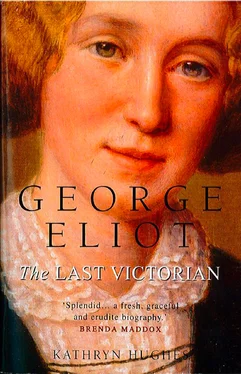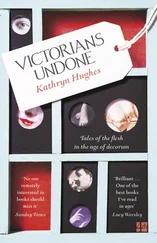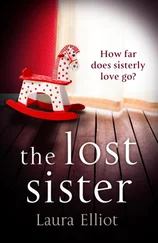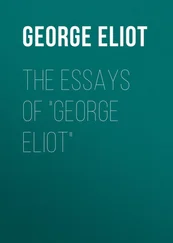Bray’s generosity and intellectual open-mindedness – many called it sloppiness – meant that he attracted friends easily. Rosehill had quickly become established as the place where any visiting reformer, philosopher or thinker could be assured of a warm welcome. Indeed, said Bray in the puffed-up autobiography he wrote at the end of his life, anyone who ‘was supposed to be a “little cracked”, was sent up to Rosehill’. 1 During these years Mary Ann met virtually everyone who was anyone in free-thinking, progressive society. The socialist Robert Owen, the American poet Ralph Waldo Emerson and the mental health reformer Dr John Conolly were just a few of the people who took their turn sitting on the bear rug which the Brays spread out in the garden every summer. Here, under a favourite acacia tree, they spent long afternoons in vigorous debate, intellectual gossip and various degrees of flirtation.
For just as the Brays challenged conventional thinking in every area of life, so their attitudes to marriage and sexual love were markedly unorthodox. Nor was this openness confined to daring chat. As people who thought deep and hard about how to live, they had come to the conclusion that the monogamy demanded by the marriage vows did not suit human nature, or at least did not suit theirs. Although enduringly attached to one another, both had taken long-term lovers.
Just how this arrangement had come about, and how openly it was acknowledged by others, is obscured by the reticence which the couple were obliged to observe in order to remain active in Coventry public life. Indeed, the main account of their irregular marriage was written down in code and not untangled until the 1970s. The stenographer was the phrenologist George Combe, who examined Bray’s head for lumps and bumps in 1851 and concluded that his ‘animal’ qualities were impressively predominant. Probing further, Combe extracted the following confession from his friend: ‘At twelve years of age he was seduced by his father’s Cook and indulged extensively in illicit intercourse with women. He abstained from 18 to 22 but suffered in health. He married and his wife has no children. He consoled himself with another woman by whom he had a daughter. He adopted his child with his wife’s consent and she now lives with him. He still keeps the mother of the child and has another by her.’ 2
This makes sense of some odd references in Mary Ann’s letters to Cara Bray during May 1845. Writing from Coventry to her friend on holiday in Hastings, Mary Ann says reassuringly, ‘Of Baby you shall hear to-morrow, but do not be alarmed.’ 3 A couple of days later she writes, ‘The Baby is quite well and not at all triste on account of the absence of Papa and Mamma.’ 4 Whoever this baby was, it did not last long at Rosehill. A month later an entry in Cara’s diary suggests that the baby was removed from the household. Clearly this first attempt at adoption had not worked out. Baby’s real mother may have wanted her back or perhaps Cara, while dedicated to young children through her teaching and writing, did not take to this particular infant. An attempt the following year with another baby, sister of the first, was successful and this time the Brays adopted Elinor, known as Nelly. Over the years Mary Ann became attached to the girl and when news of her early death came in 1865 it touched her deeply.
The fact that the first baby had been returned to its mother suggests that the Brays’ family life did not run as rationally or smoothly as Charles liked to believe. Although the details are sketchy, it appears that for a time he tried to get the children’s mother, Hannah Steane, to live at Rosehill as nursemaid. One version has Cara accepting this, but changing her mind when Hannah produced an illegitimate son, named Charles after his father. Henceforth Hannah, now reincarnated as Mrs Charles Gray, wife of a conveniently absent travelling salesman, was established in a nearby house – into which Bray could slip discreetly – with her growing family, five excluding Nelly. 5
Cara’s answering love affair was more circumspect. According to a gossipy report from her sister-in-law in 1851, ‘Mrs Bray is and has been for years decidedly in love with Mr Noel, and … Mr Bray promotes her wish that Mr Noel should visit Rosehill as much as possible.’ Edward Noel was an illegitimate cousin of Byron’s wife, a poet, translator and owner of an estate on a Greek island. He was also married with a family. Whether he and Cara became physically intimate is not clear: one version maintains this was an unreciprocated passion. All the same, once Noel’s wife died from consumption in 1845, the way was clear for him to become a familiar fixture on the edge of Rosehill life. 6
The Brays’ was the first of three sexually unconventional households which had a great impact on the young Mary Ann, whose romantic experience at this point was confined to a crush on her language teacher. Later she would find herself in a curious ménage à quatre with John Chapman, the publisher with whom she boarded in London during the early 1850s. And her subsequent dilemma over whether to live with George Henry Lewes was the result of his inability to divorce on the grounds that he had condoned his wife’s affair with another man.
It would be good to think that these open marriages were founded on a principled rejection of the ownership of one person by another, and in particular of women by men, of the kind which John Stuart Mill would set out in The Subjection of Women in 1869. But in fact there was more than a whiff of male sexual opportunism and hypocrisy about the various set-ups. Charles Bray, after all, maintained in public that ‘Matrimony is the law of our being, and it is in that state that Amativeness comes into its proper use and action, and is the least likely to be indulged in excess’, 7 yet he did not confine himself to adultery with Hannah. There were rumours that ‘the Don Juan of Coventry’ had previously enjoyed an affair with Mary Hennell, one of Cara’s elder sisters. And there was even a suggestion that he and Mary Ann became lovers at some point. Certainly Maria Lewis objected to the way the two clung together and Sara Hennell admitted after Mary Ann’s death that she had always disapproved of the girl depending too much on male affection – perhaps specifically on the affection of her brother-in-law. 8 Bessie Rayner Parkes, who was later to become one of Mary Ann’s best friends in London, certainly always believed that Mary Ann and Charles Bray had been lovers. 9
Cara Bray, too, was inconsistent on the question of marital fidelity. Although she allowed her husband to have affairs and was herself at least emotionally intimate with Edward Noel, she reacted with Mrs Grundy-ish horror when Mary Ann went to live with George Henry Lewes in 1854. For five years she refused to communicate properly with her friend, let alone to see her. That a woman as progressive and principled as Cara should display such embarrassed confusion over sex outside marriage is a reminder of how deeply entrenched were codes of respectable behaviour – especially female behaviour – in even the most liberal Victorian circles.
Although the Brays’ attitude could seem contradictory, in other lights it was subtle and realistic. Just as Mary Ann had learned during the holy war that spectacular rebellion is often the result of wilful egotism, so the Brays realised that there was little to be gained by publicly embracing the open relationships advocated by their friend the socialist Utopian Robert Owen. They preferred to remain within society and work for its improvement, rather than withdraw to an isolated and principled position on its margins. Whether the world thought them scandalous or hypocritical did not concern them. It was this example of adherence to a complex inner necessity, regardless of how one’s behaviour might be interpreted, which Mary Ann now absorbed. It would stand her in good stead in the years to come when she lived with Lewes and, on his death, went through an Anglican marriage service with John Cross. Her apparent inconsistency bewildered family and friends. Isaac Evans was scandalised by the union with Lewes, but appeased by the marriage to Cross. Her old friend Maria Congreve, on the other hand, was serene about Lewes, but disappointed by what she perceived to be the hypocrisy of the 1880 wedding service. In these apparent switches of principle Mary Ann demonstrated her determination to live flexibly according to the fluctuations of her own inner life rather than in observance of other people’s needs and rules.
Читать дальше












